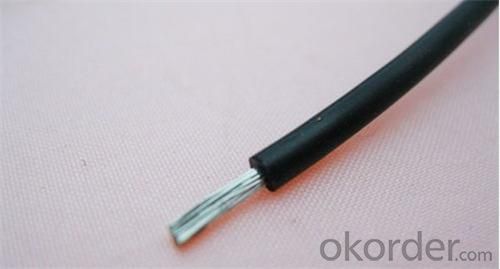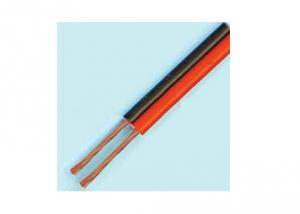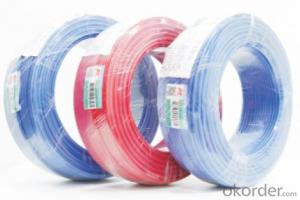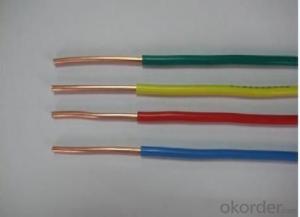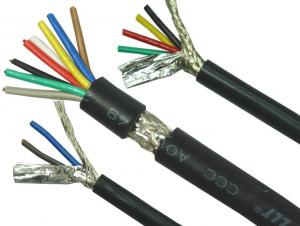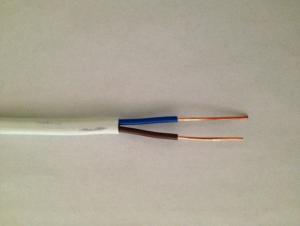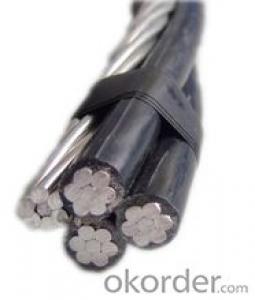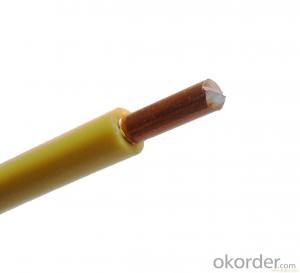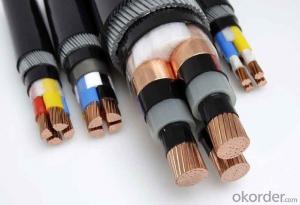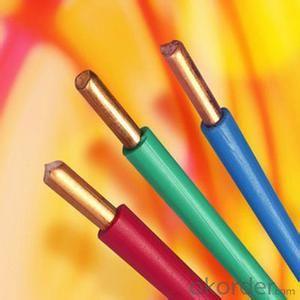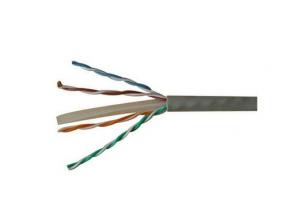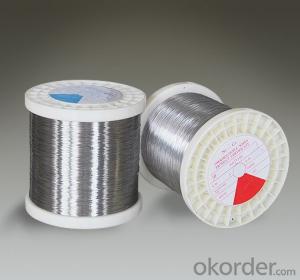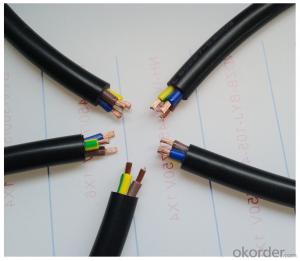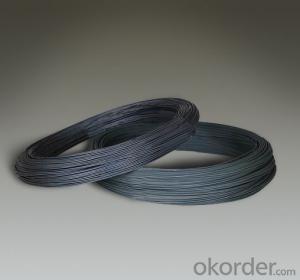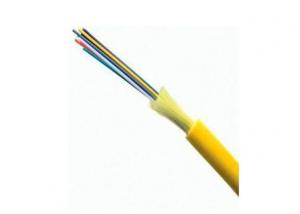Single Core PVC Wire 0.6 /1KV as per AS/NZS 5000.1
- Loading Port:
- Shanghai
- Payment Terms:
- TT OR LC
- Min Order Qty:
- 600 m
- Supply Capability:
- 120000 m/month
OKorder Service Pledge
OKorder Financial Service
You Might Also Like
1. Product Description
1) The permitting temperature of continuous working of cable conductor:≤90°c.
2) The highest working temperature of cable in occurrence of short circuit:250°c(the longest lasting period is under 5s).
3) The cable is not limited by drop in level when being laid, and the ambient temperature shall not be lower than 0.
4) Perfect chemical stability, resistant against acids, alkalis, grease and organic solvents, and flame.
5) Light weight, perfect bending properties, installed and maintained easily and conveniently
2. Product Characteristic
1. Max. Working temperature: 70 °C, can be 90 °C, 105 °C as requirement
2. Conductor: Class 1/2 Plain annealed copper wires, solid or stranded
3. Insulation: PVC
4. Cross section area: 1.5~630mm2
5. Color: Red, brown, blue, black, green/yellow or others on request
3. Product Specification
Voltage Rate | 0.6/1KV | |
Range of Nominal cross section: | 1.0 mm2 ~ 150 mm2 | |
Application | These cables are used for separate earth conductors, switchboard and control panel wiring. | |
Standard | AS/NZS 5000.1 | |
Constructions | Conductor: Class 1/2 Plain annealed copper wires, solid or stranded Insulation: V-90 PVC Core color: Black, Blue, Orange, Pink, White, Green/Yellow or others on request | |
Max. Operating Temperature | 90℃ | |
Packing | 100 meter/roll or as per requirement | |
4.Reference Picture
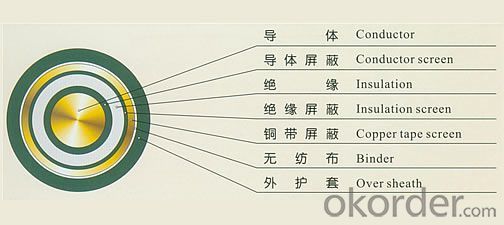
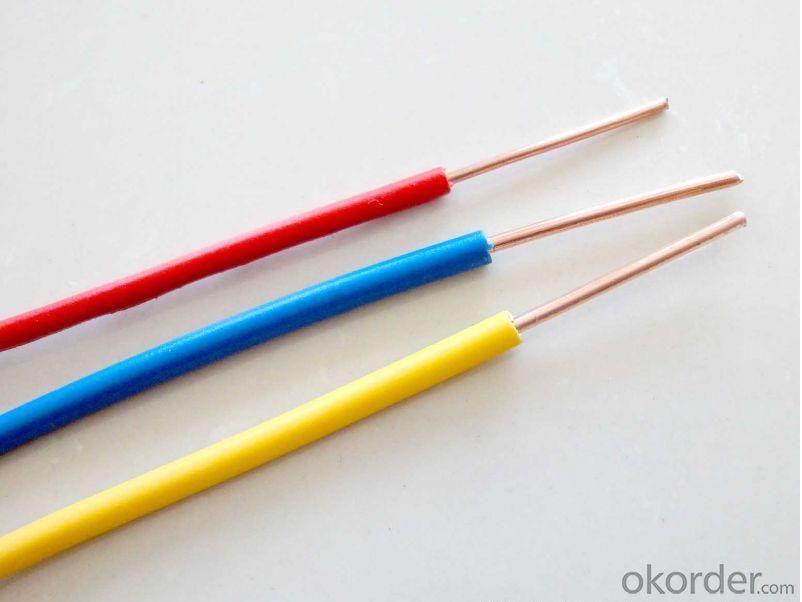
- Q: how many wires are allowed in a standard outlet box (i believe 3x2 1/2 deep). what do you do if you need more wires than are allowed?how many wires are allowed if i gang 2 boxes?i live in ontario, canada. thanks
- idk maybe 2?
- Q: do i need to convert the incoming solar power to an a/c current?I have some electrical experience, I dont want to hire anyone
- Rudydoo is the only one I completely agree with, here. It is not necessary to use batteries with a modern grid-tie (grid intertie) inverter. With electrical experience, you could hook it up yourself, but would have to be experienced enough to get into the service panel, which can sometimes source 4000 amps if you were to shunt it above the main breaker. Be sure you know what you're doing. It also generally requires permission from your local power company, and almost everywhere, permits (might be inexpensive, depending where). Also, in some countries, a homeowner is prohibited from doing a self-install. This is not true in most parts of the US, but might invalidate some state incentives, depending on where you live. Also, it's not generally worth connecting just a panel or two, unless you're in an area that has a high feed-in tariff.
- Q: Every chance my yellow headed parrot gets, he bites the electrical wires. He bites my laptop power cord, as well as any other power supply to anything. The wires sometimes become EXPOSED. Why does my parrot bite these electrical cords?
- parrots are jsu curious animals that like exploring and using their mouths to do so. the best advice i can think to tel u is to get her focused on something else and when she continuous trying to bite them put her away in the cage for a little while so she knows what she did was wrong hope this answer helps D
- Q: Wire color, black, blue, brown, the representative of what, anxious. The The The The The Thank you
- The video line follows the cable with the elevator. Car roof camera power in the car to take 220V DC power. The phone is connected directly to the pit.
- Q: Hi I am installing a pool pump. The pool pump requires a 14 awg and a 15 amp breaker. We have the wires and the breaker but a friend says since we are running it about 80 ft away from the pool it will lose power. What should we do?
- Go on up to a number 12 and keep the 15 amp breaker. The footage does not become an issue for another 50 feet so keep with code and return the 14 and don't worry about the breaker you do not want to increase the size just because you increase the size wire. the motor is the load and will be protected just fine with the 15.
- Q: I BOUGHT SOME NEONS AT WALMART THERE CALLED LIGHT TUBES FROM PILOT AUTOMOTIVE AND THEY ONLY HAVE TO ELECTRICAL WIRES WHITE AND BLACK BUT IM HAVING TROUBLE INSTALLING THEMHOW DO I KNOW WHICH COLOR IS NEGATIVE/POSITIVE?WHERE DO I HOOK THEM UP TO?
- You dont need to wire them to your headlights. It just makes things more complicated. As far as the + and - wires, negative wires usually have the stripe. Ones probably solid black (+), the other probably has the stripe (-). The positive comes from the battery, the negative is ground that completes a circuit. Since your battery grounds your whole car, any part of the chassis will ground it. Im assuming that since it said to connect to a headlight, it didnt come with a switch huh? No problem, I think its better to get your own switch. Those are easy to install also. Just pick up a simple switch you like from wal mart for like $1. Im going out on a limb here Im going to draw for you what you should do :) check your email email me back if you need help wiring the switch. They should come with instructions though. You will need to splice the switch into your positive wire of the tubes.
- Q: Home there are a lot of high-power electrical appliances, decoration to buy what kind of wire? I do not understand hydropower knowledge, help more
- commonly used wires, cables by the use of what types of points? A: According to the use can be divided into bare wires, insulated wires, heat-resistant wires, shielded wires, power cables, control cables, communication cables, RF cables
- Q: I want to replace a switch (not 3 way) with a switch that also has a plug on it. Does it wire the same? If you could check out my other question
- From your question It is clear to me you need to hire an Electrician to do this job for you. Hey these guys have got to earn a living too! Consider the safety factor for you and your Family. A good Electrician is worth his weight in Gold!!
- Q: First of all, I need to know if this is a fire hazard, how it happened, and how to fix it:A couple of hours ago, a wall socket in the kitchen with an air-freshener plugged into it suddenly made a popping sound. My b/f went in there to see where the sound had come from. It was that wall socket. It had started to make a loud buzzing sound. He pulled the air-freshener from the plug and the sound stopped, but most of the lights in the apartment went out, also, my computer, the refrigerator, the A/C, only a few sockets were left working.Then, by some fluke, he asked me as I was standing in the kitchen if the stove was on. It wasn't, but I started to turn on one of the burners. As I did so, all the lights, my compurter, the A/C, etc all came back on! I turned the burner back off and everything stayed on! This is true and very strange and frightening, as we were afraid of an electrical fire from wiring gone haywire or something.
- It sounds like there is a broken neutral wire in your fuse/breaker box. The stove wiring is a 220 volt service that comes from the breaker box. It is protected by 2 breakers, assuming of course that your apartment is new enough to be using circuit breakers as opposed to fuses. The wall outlet is in a different circuit than what the stove power is, or at least it should be. The buzzing noise was from arcing in the outlet. This generally means that either the appliance plug, or the appliance is bad in some way, or the outlet is bad. Either way, it is bad news, yes, it is a fire hazard, and does need to be repaired as soon as possible. ALL of the grounds and neutral wires in the apartment need to be checked for proper connection, and continuity back to the breaker box. I suspect that turning on the stove put enough of a surge in the right place to correct the bad ground condition, for now. Don't rely on that though, get it fixed.
- Q: I am having a problem with the wiring in my basement. What I am doing: I wired a new outlet box off of an old outlet box. From the new outlet box, I then wired a switch for a new light fixture. So the wiring goes; fuse box, outlet box, outlet box, switch, light. Well, I blew the fuse once I turned the new light on. (BTW, I had a buddy stop at lowes to pick me up a switch and he returned with a 3-way switch). I only need it to operate as a 2-way which I have figured out how to do from the internet. My question is, while testing the outlet boxes and switch after I blew the fuse, I found the I have continuity between the common and hot wire. Mind you the fuse has been removed. So how can I have continuity between the common and hot wires? Thank you.
- With respect, you have mis-wired somewhere. Old Outlet Box is A New Outlet Box is B Switch Box is C Light is D A (hot)--------------------------- B (hot) ------------------------------------ C / --------------- D (hot) A (neutral/common)-------- B (neutral) ---------------------------------------- D (neutral) A (ground) -------------------- B (ground)------------------------------ C (ground)------- D (ground) As to a 3-way switch, in the switch box, the hot goes to the copper-colored screw, the leg to the light goes to either of the brass-colored screws. The neutral goes straight through the switch-box. Only the HOT gets switched. The ground is connected to all three new devices but is continuous. If this is not crystal-clear, call an electrician.
Send your message to us
Single Core PVC Wire 0.6 /1KV as per AS/NZS 5000.1
- Loading Port:
- Shanghai
- Payment Terms:
- TT OR LC
- Min Order Qty:
- 600 m
- Supply Capability:
- 120000 m/month
OKorder Service Pledge
OKorder Financial Service
Similar products
Hot products
Hot Searches




